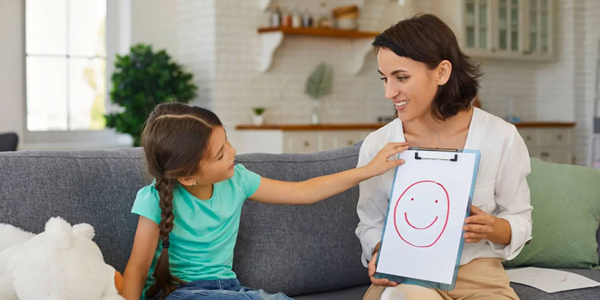Hey there, parents! Do you ever feel caught in a loop where your children misbehave? Sometimes, it is difficult not to criticize or punish the child each time they do something wrong.
However, frequently utilizing negative reinforcement can have adverse long-term consequences. It could seem quick and easy, but in the long term, it creates anxiety, resentment, and a dreadful connection between parents and children. Nobody desires that.

This blog post will share practical and possible strategies for correctly applying positive reinforcement. Your family relations will improve significantly if you follow the positive reinforcement model.
Prepare yourself for a new level of parenting and see your kiddos grow to the next level!
Your child is happy to see you after school or after they have cleaned up their toys because you have praised them. That is how positive reinforcement works; it is the secret behind the positive changes that are seen!
In this way, you constantly train your little ones to be suitable by reminding them of the right things to do. It's like providing them with directions to the destination they want to achieve.
The positive learning environment you establish will allow them to succeed even in the future. They will be encouraged to continue producing good work and managing their feelings well.
Let your child experience positive reinforcement and see the child transform! This will benefit everyone involved in the process.
It is not just a matter of chance to raise strong children; it is a matter of planning and coming up with the right move. Below are some ideas on how to assist your little ones in coping with life's challenges.
If you would like your child to be one who does not easily quit, then We suggest you read this. It is essential to allow them to foster problem-solving skills by solving them.
When your little one faces a challenge, take your time solving it for them. You should be their supportive guide. Instead, you can ask questions such as, 'Have you any ideas?' and 'Do you know of any other way we could do this?'
Here's a quick problem-solving roadmap for kids:
● Identify the problem
● Brainstorm possible solutions
● Choose one to taste
● Assess as to how it was implemented
● If the first attempt does not work, do it again.
Finally, do not expect them to get it right the first time it is attempted. That's where the real learning takes place!
Have you ever come across the term, growth mindset? It is the ingredient of the time-tested spirit. Growth thinkers in children do not perceive barriers but as opportunities to grow and develop.
Well, how does one maintain this superpower? The message is that it's all in how you praise. Instead of saying, "You are so intelligent," one can say," "I like how much effort you put into that." This change of focus is on effort as opposed to ability.
Promote statements like "I can't do it... yet" to help the children understand that skills are developed with time.
Allowing people to express their emotions freely is very important to create resilience.
Consider establishing a feelings check-in meeting at dinner time. It is advisable to ask, "What made you happy today? What was challenging?" This makes it easier for the child to discuss feelings.

Before you try to solve the problem, listen to your kid and tell them it is okay to feel that way. Try phrases like:
● "Hmm, that sounds frustrating,"
● " It is alright to be furious about that."
● "Well, that is why you may feel let down."
However, the focus here is not to heal the child's feelings but to assure them that you are there for them.
Children are susceptible and readily absorb all the information from the surrounding atmosphere. This also encompasses stress management and other forms of difficulties that we face in life. Want resilient kids? Be a resilient adult.
The next time you burn dinner, rather than panic, you can say, "Well, it seems we are having a pizza tonight. Whoops. Things do not always go smoothly, and that is alright."
Give examples of situations when you could observe conflicts and how you solved them. Allow your children to watch you when you are overwhelmed, taking deep breaths, or using positive words to yourself.
It is attractive to try to bubble-wrap our kids. However, this will only help them in some way. Measured risks assist in establishing confidence.
What is considered to be a healthy risk? Well, it depends on the kid. For a toddler, it could be wanting to go down the giant slide at the park. If you are a teen, it could be an audition for a school play.
Do not offer a cage but a safety net. Challenge them to do things that they have never done before, but at the same time, support them when they fail. And when do they take that leap? Congratulations to these brave hearts, even if they cannot win.
Parents, it's time to implement these favourable reinforcement techniques! Remember, consistency is critical. Please commit to catching your child being good and celebrating their accomplishments regularly.
It takes patience but trust in the process. By consistently reinforcing positive behaviour, you shape their actions and build a stronger, more nurturing relationship.
So, what are you waiting for? Accept the benefits of positive parenting and see your child flourish. You already own this!